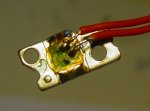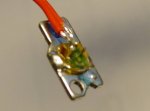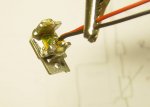IgorT
0
- Joined
- Oct 24, 2007
- Messages
- 4,177
- Points
- 0
Hi guys!
Since i also have a few CD-RW/DVD-ROM combo driver laying around, i was wondering if anyone knew what the power ratings of DVD reader LDs are? For example a 16x DVD reader.. Or an 8x?
I know they're not enough to burn anything, but i believe, they should at least make nice laser pointers...
So should i treat them as if they were 5mW? 10? What current should i be driving these with?
Any info would be greatly appreciated.. I just need an approximation..
Thanks!
Igor
Since i also have a few CD-RW/DVD-ROM combo driver laying around, i was wondering if anyone knew what the power ratings of DVD reader LDs are? For example a 16x DVD reader.. Or an 8x?
I know they're not enough to burn anything, but i believe, they should at least make nice laser pointers...
So should i treat them as if they were 5mW? 10? What current should i be driving these with?
Any info would be greatly appreciated.. I just need an approximation..
Thanks!
Igor








